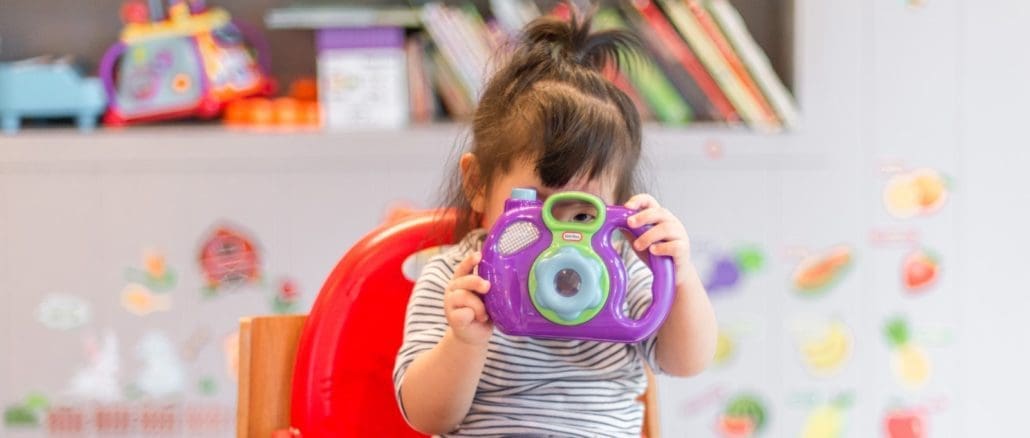
Having a baby is probably life’s most incredible experience. And as you’ve heard, it’s also life’s greatest responsibility since you could make one. This includes feeding, clothing, & bathing them, teaching them general life lessons, and above all else, keeping them safe. Baby-proofing your home is the first step to keeping them safe.
As a new parent, you already know that the most crucial thing in the world is protecting your new baby; therefore, you should create a safe environment for your baby. One of the best ways to create a safe environment for your baby is to establish a safe home for exploration and curiosity, which can be done by baby-proofing your home.
Luckily, you can baby-proof your home with little or no cost, and all you really need is sharp attention to detail and the ability to imagine the worst. The key to making your home safe for a baby is to know what to do to prevent those worst-case scenarios.
While there is almost certainly no way to foresee and prevent every mishap in your child’s life, baby-proofing your home can significantly reduce the risk of serious injury coming to your precious new baby.
To get started, it’s a good idea to first know what general things you’re looking for, which begins with examining each room in your home to eliminate any potential dangers. Along with these general dangers, such as electricity and choking hazards, several specific baby-proofing tasks must be done for each room.
The baby’s environment should be monitored or changed based on the developmental stage he or she is experiencing. In other words, you should learn basic baby-proofing guidelines and make changes to your home when necessary. All too often, small objects magically seem to appear on the floor, which can be hazardous to your child. Therefore, you should always be aware of the environment that you create for your baby.
Even if you’ve taken every precaution today, three months from now, a new set of risks may present themselves. For example, as your child grows, they will begin to reach things previously safely out of reach, such as a silverware drawer or a doorknob. Also, new dangers accompany these developmental milestones when a baby learns to crawl, cruise, and walk. Make sure you are consistently planning ahead and baby-proofing because children develop at different rates, and anticipating your baby’s actions will help you prevent accidents and unfortunate events.
It’s much easier to take some time to baby-proof your home properly than to watch harm come to your child. Especially harm that could have been prevented.
NOTE: All houses are not the same. You should keep your eye out for any dangers specific to your home. Also, not all hazards are listed on this website. It is meant to be a starter’s guide to baby-proofing.
General Baby-Proofing Tips
To start baby-proofing your home, there are a lot of general things that you need to look for. Some of these things are pretty obvious, but when you’re taking on a big task, like baby-proofing your entire house, it helps to have some guidelines to avoid overlooking potential harm to your baby. Some of the things that you want to look for include the following:
Things your baby can put in his or her mouth.
Be on the lookout for small objects your baby can choke on or anything that may be poisonous or hazardous if ingested. You must always look for anything that may have fallen on the ground or been left out. Small objects that can fit in your baby’s mouth will make it into their mouth more often than not. As you know, babies are inquisitive and are unaware of the dangers involved in putting a small object or poison into their mouths.
Therefore, as a parent, you are responsible for picking up and removing small objects from any area of your home that the baby can get to. In addition, you should ensure that your child does not ingest poisons and keep cleaning supplies, medications, hair products, and any other toxic materials out of your baby’s reach. Most people keep all of their cleaning chemicals under the sink. While this is convenient, it’s at the perfect level for your little one, and they don’t know the difference between Draino and Kool-Aid.
Consider getting a safety lock for all cabinets containing toxic/poisonous materials to prevent your child from accidental indigestion. Many parents lock that cabinet, but I recommend just placing them out of reach altogether. A higher cabinet, utility closet, or garage are ideal places.
Also, ensure that you don’t leave excess cleaning product on surfaces your baby can access. Your baby could quickly come in contact with poisonous materials on the floor, coffee table, or other areas of your home. If your child is exposed to toxic material, please call poison control.
Things that can fall on your baby: Bye-Bye Bookcase
This is an area of baby-proofing that is often overlooked. You need to be sure that cords, tablecloths, and anything else your baby can grab onto are out of reach. It’s not hard for a baby to pull a lamp off the table by the cord. Once your baby starts to pull himself up to stand or walk, be weary of chairs or tables that he can pull over on himself. All objects on the lower shelves of bookshelves should be relocated to shelves that are out of reach.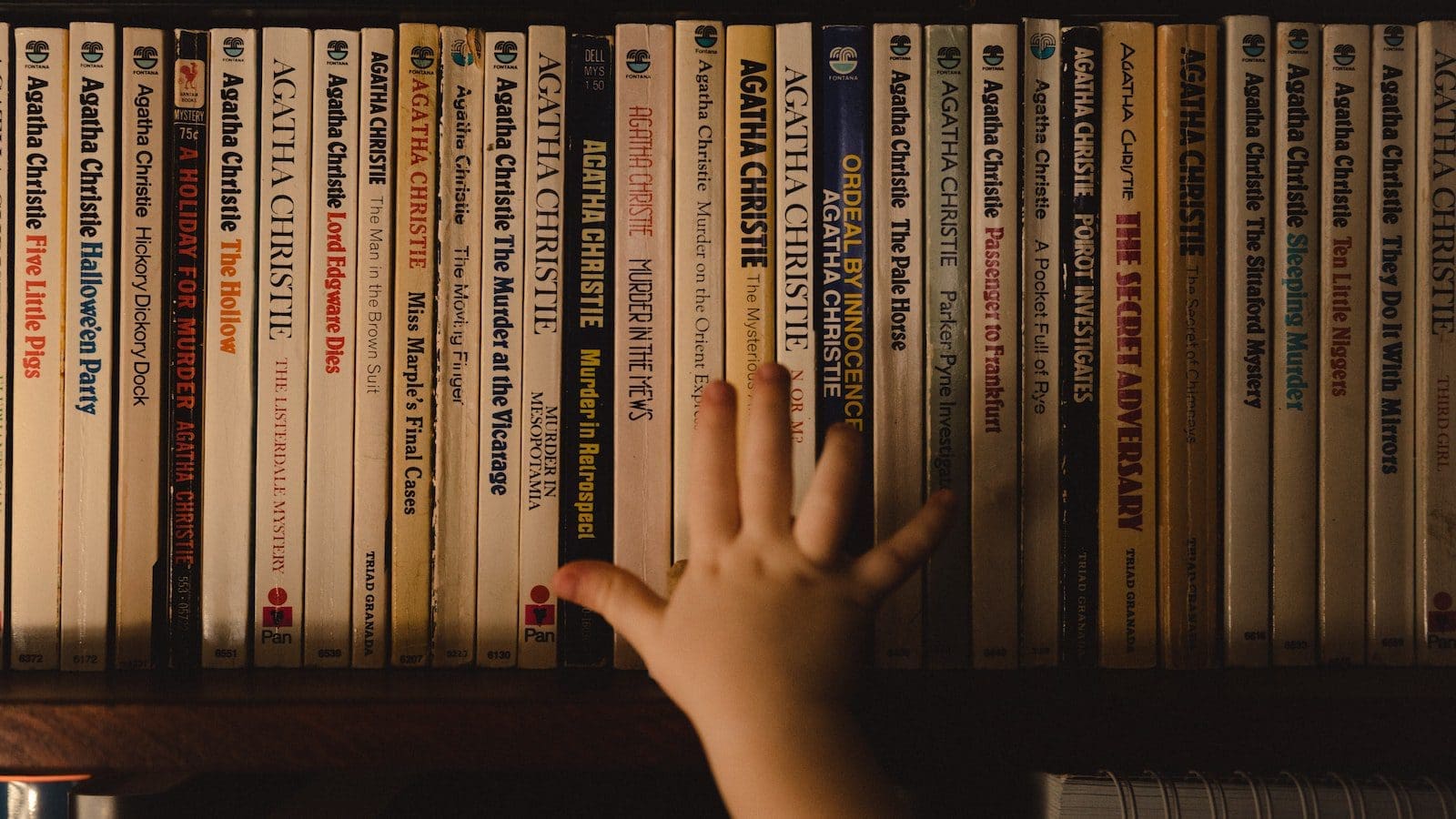
If you have a bookcase, there are two potential disasters. First, your child could climb it, and either fall off or pull it down onto themselves. Or, second, they could just pull all the items down and ruin them. Avoid both by installing wall shelves at least 5 feet off the ground.
Soften Inevitable Falls – Places where your baby can fall
Your child will fall down all over the place; there’s nothing you can do about that. But you can soften the blow. Cover your coffee table with a baby bumper, or replace it with a rounded table. Be wary of any other sharp edges around your home.
Baby-proofing your stairs is easy and extremely important. All you need to do is install a removable gate at the top and bottom of all stairs. It’s essential to baby-proof the bottom of stairs along with the top because babies may find a way to climb up a few stairs and then find their only way back down, followed by injury.
Close Off Dangerous Areas
Place a safety gate in front of rooms you don’t want your baby to wander into. If you have a fireplace, get a baby fireplace guard. Place baby-proof doorknob covers on all your doors.
Electricity
We know that you need to use electricity in your house. To make your baby as safe as possible, install outlet plugs that prevent anything from being shoved into the socket. Loose cords should also be secured behind furniture to avoid chewing or pulling.
Water
Your baby can drown in water. This should be obvious to everyone, so there is no reason to leave your baby alone in the water. NEVER leave your baby alone in the water.
Places where you don’t want your baby
When you consider baby-proofing your drawers/cabinets, you will probably have to put in a bit more work, but it is well worth the time. When your baby crawls, a simple magnet fastened inside the door and the cabinet may be enough to keep them out. However, when your baby starts pulling themselves up on anything in reach, you’ll find that a magnet generally won’t hold their weight. At that point, you may have to install a baby-proof latch.
Sharp corners
When avoiding sharp corners, the best-case scenario is to buy furniture without sharp or jagged edges. Unfortunately, furniture is expensive, and buying new furniture may not be practical. However, you can baby-proof your furniture, with sharp edges, by installing plastic or rubber bumpers on the corners. You don’t need to keep these on forever, but it’s not a bad idea when your baby is learning to walk.
Strangulation hazards
In most homes, there are electrical cords and drapery cords located throughout the house. To protect your baby, you should ensure that all cables are behind furniture that the baby cannot get to or that the extra cord is wound up and secured. Also, keep phone cords out of reach if you have a phone with a cord.
Another thing that can get caught around your baby’s neck is the cords from blinds, shades, or draperies. In this case, you could install a hook next to the window that the cord can be wrapped around to avoid accidental strangulation. Another precaution you can take is to cut the loops at the end of these cords because there is still a chance that the cords might fall off the hooks from time to time.
Baby Proof Your Bathroom
Baby-proofing your bathroom is extremely important. There are several possible dangers in the bathroom that you need to baby-proof, some of which are less obvious than others. In other words, you should take the time to examine the room in great detail.
Your baby will probably spend most of their bathroom time in the tub, so that’s where we will begin. The first thing you need to remember is to never ever leave your baby unattended in the water. Don’t leave your baby alone for even one second. Not to answer the phone or take dinner out of the oven, NEVER. Also, keep electrical appliances, like a radio or hair drier, out of the baby’s reach.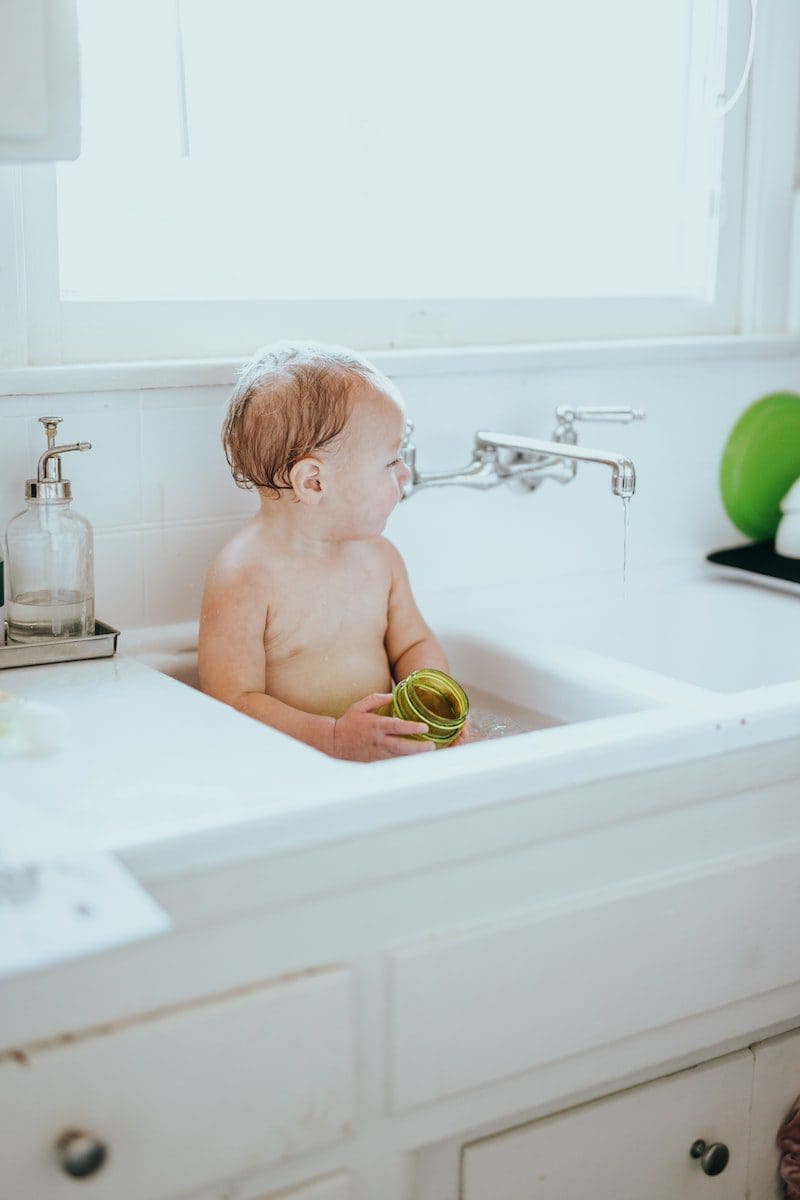
Babies are inquisitive and like to grab hold of things like cords; therefore, ensure that the hair drier or any other electrical device is out of reach. In addition, you want to make sure to use soaps, creams, shampoos, and powders that are appropriate and safe for your baby. Basically, you don’t want any harmful chemicals in the bath with your baby. When you baby-proof, you should always be aware of what chemicals may be in the area. For example, harsh hand soaps that don’t affect you may cause severe irritation to your baby’s sensitive skin.
When bathing your child, ensure the tub is free of harsh soaps or cleanser residue. When you check the water temperature, check the temperature with your whole arm. Checking with your fingertips can be deceiving since your hands’ nerve endings are generally not as sensitive. Therefore, what feels warm to your hands may be too hot for your baby’s skin. If you are still unsure about the temperature of the water, you can purchase a baby bath thermometer for a reasonable price. Lastly, when you bathe with your baby, make sure that you get out of the tub and on dry stable ground before you pick your baby up. A slip-and-fall accident while holding your baby could be tragic.
Another thing to look out for when baby-proofing your bathroom is the medicine cabinet. While most babies will have no realistic way to reach into a medicine cabinet, it’s still a good idea to keep it locked. Eventually, your child can climb on the counter and access many medications, which is why it’s a good idea to take care of this threat before it becomes a problem.
Another thing to remember is where and when you take your medicine if you take. Babies constantly explore and absorb what is around them, developing socially and cognitively through imitation. Therefore, it is safe to say that you should not take medications in front of your baby. Also, don’t give your baby the idea that putting pills in your mouth is good.
Another good idea is to have an area designated for cleaning products; keeping the bathroom, kitchen, and any other cleanser in one location is ideal. There is no point in worrying about poison in several areas of your house. If you keep them all together, keeping your baby away from them is easier.
Like any room in your house, look around your bathroom closely. There are a lot of things that could be dangerous to a child. You need to use your imagination when baby-proofing. If you see any possible danger, do something about it before it’s too late. For example, you may want to try to keep the bathroom door closed throughout the day to prevent the baby from coming in contact with possible hazards and for peace of mind.
It may be slightly inconvenient to knock on the door to ensure the bathroom is unoccupied, but it’s an excellent way to ensure your baby is safe.
Baby-Proof Your Kitchen
Baby-proofing the kitchen of your house can be difficult because there are numerous things in the kitchen that can harm your baby. If you approach the task with a good idea of what you’re looking for and eliminate each danger one at a time, you can make it a much safer place for a baby.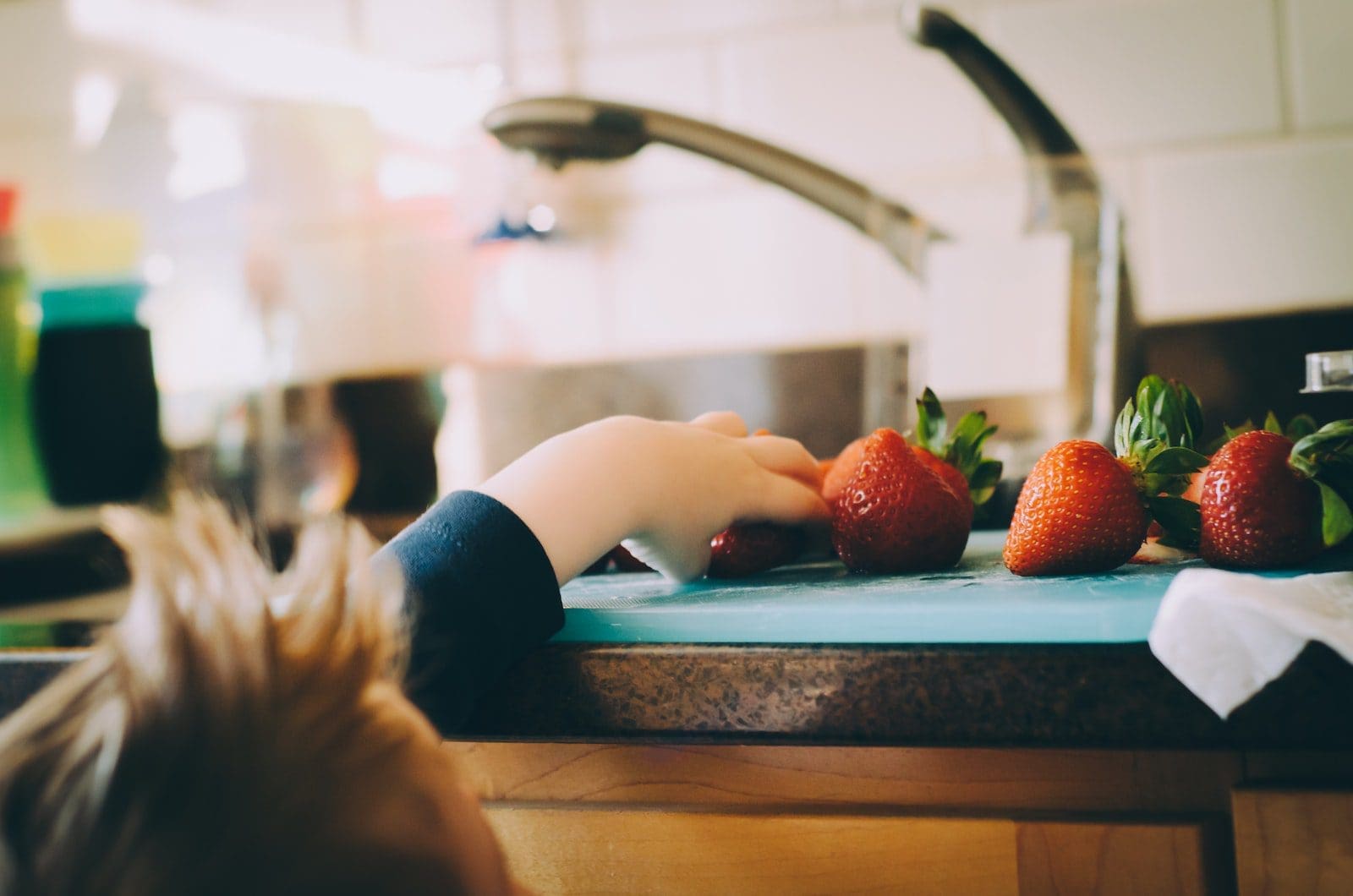
The stove can pose a threat for obvious reasons. A gas stove is especially dangerous since it’s often difficult to tell whether it’s on or off. An excellent way to baby-proof the stove is to install child-proof knobs or knob covers. You should also use the back burners whenever possible to reduce the risk of your child getting at the pans or hot objects on the stove. This should also provide another layer of protection against grease splatter or boiling overreaching your baby.
The main danger posed by the refrigerator is the magnets that some people use to put photos up. The problem with these magnets is that they fall off easily, and since they’re small and easy to overlook, they can quickly become a choking hazard to an unsuspecting baby. The best solution to these magnets is to get rid of them. Another alternative is to use the large flat magnets that businesses often give away.
Many people keep their cleaning supplies in the kitchen. This is a good idea as long as they are in a cabinet that locks and is out of the baby’s reach. Another possible solution to this threat is keeping the cleaning supplies in a room where the baby rarely goes, such as the garage or laundry room.
When you baby-proof your kitchen, you should know the appliances that heat up, such as cooking supplies, coffee pots, toasters, or anything else. Make sure that they are never in the same place as your baby. Babies are often enticed with dangling cords, things that light up, and buttons to push, which is why appliances seem like extraordinary objects to explore. However, babies do not realize that appliances are not toys or objects to explore; therefore, all kitchen appliances must be kept out of the baby’s reach.
In addition to appliances, a kitchen usually contains several utensils, knives, and silverware. Some of these specific kitchen tools can be dangerous to your baby, so you need to ensure that your baby doesn’t get a hold of these items. Be sure to shut (and lock, if in baby’s reach) drawers and cabinets, keep sharp objects such as knives far out of reach from the baby, and fix any broken hinges or other things in the kitchen that could hurt your baby.
Installing and using safety gates to keep your baby out of your kitchen is a great way to prevent mishaps. There are several things in the kitchen that your baby can get into, and it’s tough to baby-proof everything. Therefore, sometimes it’s better to prohibit the baby from wandering into the kitchen in the first place.
Baby-Proofing Your Nursery
A nursery is where the baby will be left unattended when sleeping, which means that baby-proofing your child’s nursery may be the single most crucial task when baby-proofing your home.
Special attention must be taken when baby-proofing the crib. The crib is your first line of defense against any other dangers in the room. If you have a crib that is no danger to the baby and can properly and safely keep the baby inside, you should have nothing else to worry about. But since we’re talking about our children here, we’ll worry anyway.
Your crib should be free and clear of anything that can fall into it. Any mobile you use needs to be adequately secured and out of the baby’s reach. Once the baby is old enough to pull him or herself to a standing position, you need to remove the mobile to avoid potential accidents. Also, avoid hanging any type of picture, painting, shelf, poster, or toy net in the area because these items can cause numerous accidents.
One important tip is to pay attention to where your child is developmental. If you have a baby trying to climb out of the crib, you should consider getting a toddler bed to keep your baby safe. Also, you must have minimal things inside a crib; therefore, you should avoid having numerous pillows, blankets, stuffed animals, crib toys, mobiles, and padding inside the crib. The extra items in the crib can lead to suffocation or other common accidents.
Consider placing your baby in a wearable blanket instead of a typical one. Overall, have a crib free of clutter, do not place things on the walls near or above the crib, and attach toys on the side of the crib that is against the wall so that the baby cannot use it to aid them in climbing.
Although your baby will spend most of his or her time in the nursery sleeping in a crib, it is also necessary to baby-proof the diaper changing area. To ensure your baby is safe, you should never leave a baby unattended at the changing table. Your baby could roll over within seconds, which could yield tragic results. Also, place all powders, creams, and plastic bags (used to dispose of diapers) out of the baby’s reach. 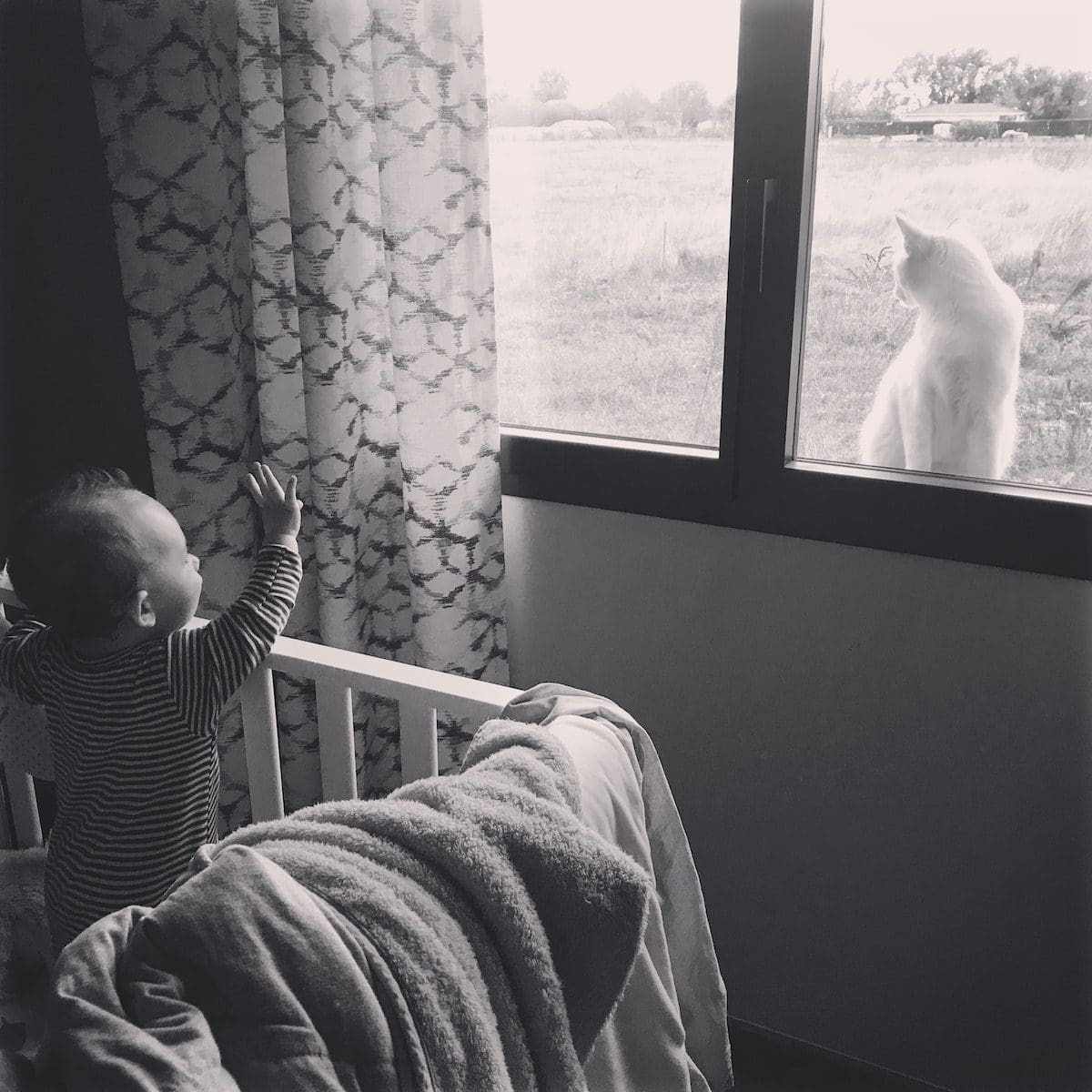
Although powders and creams are helpful and can help with diaper rashes, powders and creams can be toxic to your baby. For that reason, you should ensure that all diaper ointments, powders, and creams are kept far from your baby’s reach. Plastic bags used to dispose of diapers should be kept out of the baby’s reach because a baby can quickly suffocate or choke.
The last item in the nursery that you should baby-proof to keep your child safe is the toy box. If you have a toy box, toy chest, or toy holder, you should ensure that the lid cannot slam down onto the baby’s fingers. Also, the toy box should have air holes just in case the baby gets trapped inside.
Baby Proofing Checklist
- Electrical outlets are covered.
- Cleansing products are in a locked cabinet or in an area that the child cannot get to (e.g., garage)
- Cords (blinds, draperies, electrical) are out of reach
- Tables/furniture have rounded edges or plastic bumpers
- Breakable items are removed from lower shelves
- Shelves are installed with secure L brackets
- Play areas are free of small items
- Cover all heaters
- Block all access to windows and mirrors that aren’t shatterproof
- Remove all slippery throw rugs
- Make sure that all poisonous plants are removed
- Examine furniture to make sure that it is stable and in good repair
- Place locks on all cabinets containing items that are inappropriate or dangerous to a baby
- Beware of toys with small parts (buttons on stuffed animals, zippers, and bells)
- Be sure that toys are not painted with or contain substances that could be toxic to the child
- Remove all broken furniture and toys immediately
- Toy chests have air holes and safety lids.
- The crib is placed so the child cannot reach shelves, windows, or electrical outlets.
- Remove mobiles and bumpers if the child can pull him or herself to a standing position.
- Remove all unnecessary blankets or stuffed animals from the child’s crib
- Make sure all cribs and other baby furniture meet consumer protection safety standards
NOTE: This baby-proofing checklist is meant to be a starting point. We recommend you add to it for any specific baby-proofing your home may require.
If you take the time to look for all these things, you will already be on the right track. But, of course, every house has its own specific dangers. Therefore, when you baby-proof your home, always look for every possible hazard.



Be the first to comment